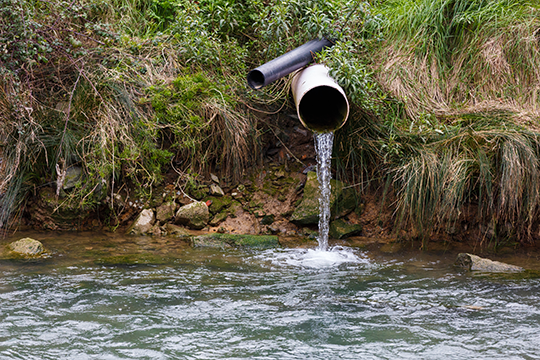Roughly 30 percent of Floridians rely on septic systems, or onsite sewage treatment and disposal systems (OSTDS), to treat and dispose of household wastewater. This translates to about 2.5 million systems in operation in Florida — discharging about 426 million gallons of wastewater per day to underlying soil and groundwater (Meeroff et al. 2008). Wastewater carries pathogens, nutrients (like nitrogen and phosphorus), and trace organic chemicals that may be harmful to human health and ecosystem function. Proper treatment of wastewater is crucial, and septic systems can be one means of effective treatment.
The 2016 Florida Springs and Aquifer Protection Act gives special status and protection to historic, first-magnitude springs as well as other springs of significance. Deemed "Outstanding Florida Springs," these natural features are a unique part of the state's scenic beauty. They provide critical habitat for aquatic wildlife and vegetation, and also have natural, recreational, and economic value.
As part of this legislation, if septic systems are found to contribute a significant amount of nitrogen (N) pollution to a spring, local governments must adopt a remediation plan to address this source of nitrogen loading. These remediation plans may include conversion to central sewer or replacement/remediation of conventional septic tank systems with advanced nitrogen removal technology.
About Septic Systems
Since most septic systems are out of view, few people give much thought on how the system operates. Septic tanks have a major impact on Florida's environment. What happens "after the flush" is of particular importance to all Sunshine State residents, and especially to researchers and conservationists who work to protect Florida's fragile water supply and ecosystems. That's why it's integral to "know before you go."
About Florida Springs

Wastewater draining into waterway through municipal pipes | Getty Images
Geologists estimate there are more than 1,000 springs in Florida — representing what may be the largest concentration of freshwater springs on Earth. These unique waters provide a home for diverse wildlife communities. In addition, they are an enduringly-popular recreational destination for many residents and visitors.
The Florida Department of Environmental Protection's (FDEP) Division of Environmental Assessment and Restoration (DEAR) is committed to safeguarding all of Florida's natural resources and enhancing its ecosystems by creating strong community partnerships. In terms of protecting and restoring Florida springs, department officials coordinate monitoring and assessment of water quality, set strategic targets, and implement broad-based blueprints for restoration activities.
Protecting Our Water
The Clean Water Act is a federal U.S. law that requires each state to regularly assess water bodies in their state and creates lists of areas that are impaired by certain pollutants (such as, but not limited to, nitrogen (N)). Once a water body is on a list of impaired waters, a plan must be put in place to bring the water body back to healthy conditions.
A Basin Management Action Plan (BMAP) is one tool used by FDEP to outline goals for improving water quality in the state’s impaired water bodies. Many of Florida’s springs are plagued by excess nitrogen in the form of nitrate. BMAPs — which are created with local stakeholder input — detail approved activities and necessary steps to return the state's springs to healthy conditions.

